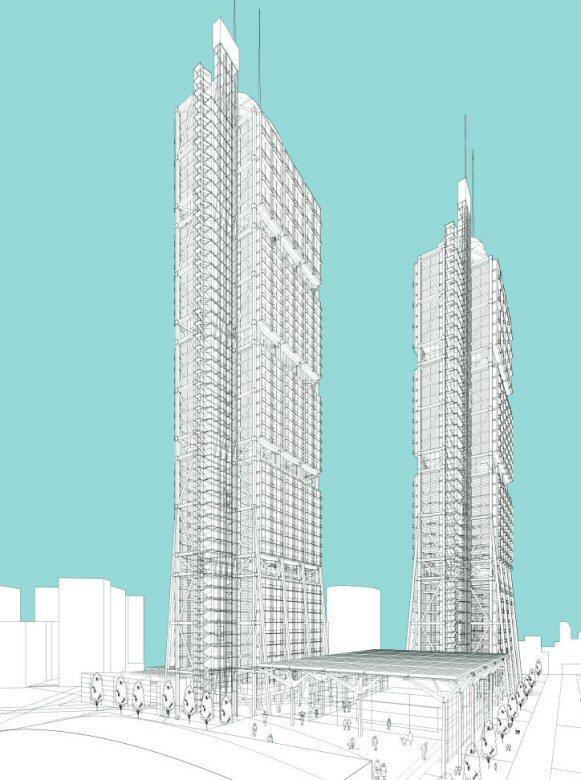
Lea Towers proposal, Stratford: Richard Rogers. Via SkyscraperCity
This short post owes much to a class discussion had this morning with Mark Cousins...
There is a temptation, when gazing up at the monstrosities of contemporary "post-architecture" (in the words of Sinclair), to let blame fall at the feet of the architect. Starting in earnest from perhaps the post-war period onwards, architects have been branded as cack-handed dreamers – belonging to a hopeless profession that is neither pragmatic nor artistic yet claims to be both. Their overpriced megalomanic schemes, fundamentally flawed at even the level of basic services and waterproofing, inflict upon every generation new social problems at ever-increasing scales. And yet it is rarely remarked that it is not architects that choose their site, their scale or their budgets.
Architects, and what is called architecture, is largely defined by the fulcrum of urban-planning and capitalist development. Neither of these forces is any less naive than the architect. Architecture's rise as a saleable commodity can be attributed, at least in part, to the transformation of the patron into the client. The patron, unlike the client, has no fiscal objectives in commissioning a project. In saying this I am perhaps extending my thoughts on Specular Architecture, which is both specular in a visual and iconic sense as well as being founded on financial speculation. Read: Zaha.
The scale of architecture responds to the scale of capital. And since a modern market economy demands constant growth, the scale can only increase. Larger and larger sites, larger and larger sums, larger and larger profits. I'm no apologist, but I think it is quite clear that architects, like any service profession, will rise to the expectations of whoever is footing the bill and giving the orders.

No comments:
Post a Comment